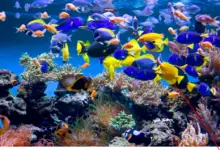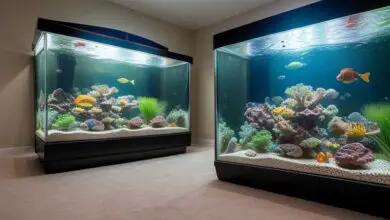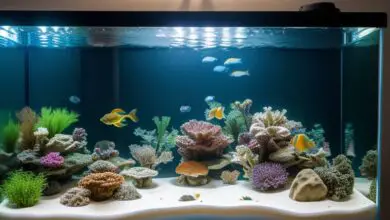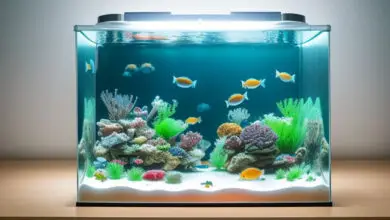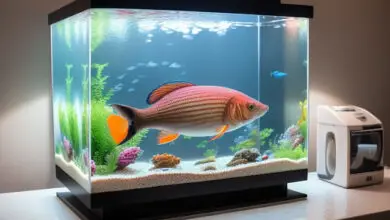Conserving Water in Your Aquarium- A Recycling Guide

Fishkeeping does use up water over time – from topping off evaporated moisture to diluting nitrates through routine changes. While individual tanks may not consume huge amounts, conserving adds up at a larger scale. Some key benefits of recycling old water back into your system include:
- Preserves a Precious Resource: Freshwater is increasingly valuable in many parts of the world. Reusing helps ensure future supply.
- Supports Sustainability: Recycling and closed loop systems promote eco-friendly operation with less waste discharge.
- Saves on Utility Costs: Not needing to use as much tap water reduces monthly water bills!
- Maintains Stable Conditions: Old water contains traces of nitrogen compounds to “seed” biological filtration.
With some adaption to your maintenance regimen, recycling provides environmental and practical dividends.
Methods for Storing Used Aquarium Water
Saving old aquarium water for reuse rather than pouring down the drain requires a bit of planning. You need sufficient storage space and a way to transport aged water back to tanks. Some approaches include:
- Plastic Trash Cans: Food-grade barrels work well to collect large volumes during changes. Label clearly and keep covered.
- Five Gallon Buckets: Convenient to position next to tanks to gravity drain into during siphoning and vacuuming. Stackable.
- Used Milk Jugs: These household containers are free, complete with handles and screw cap. Rinse thoroughly before re-purposing.
- Gravel Vac Hoses: Long tubing allows direct drainage into an auxiliary holding vessel like a barrel or tank.
- Battery Backup Pumps: Transfer water from storage back into the display tank whenever needed. Fully automated!
Get creative sourcing clean vessels and moving water around to simplify integrating reuse into your current system.
Uses for Recycled Aquarium Water
Instead of dumping aged water, look for opportunities to repurpose it. Some options within your fishroom include:
- Water Changes: Blend with fresh treated water for partial routine changes. Use 100% recycled for short-term holding systems.
- Topping Off: Drip aged water back in daily to replace evaporative loss rather than adding all new. Conserves reserves.
- Vacuuming: Always drain this debris-laden water into storage for recycling rather than discarding down the sink.
- Cleaning Gear: Rather than using costly RODI water, reuse aquarium water to scrub canister filters, gravel washers and other equipment.
- Gardening: Old tank water contains traces of nitrogen and minerals from fish waste and food. Use it to water non-edible backyard plants.
- New Aquariums: Mixing a portion of used water helps “cycle” new tanks faster by adding traces of beneficial bacteria.
With every water change, be diligent about diverting as much liquid as practical for reuse elsewhere. This one step conserves the most over time.
Adjusting Your Water Changing Routine
To make aquarium water recycling convenient long-term, adapt your habits and customize a reusable workflow. Here are some tips:
- Change Water Less Frequently – For established tanks with light bioloads, stretch change intervals using testing as a guide. Shoot for 25-30% monthly.
- Upgrade Filtration – Oversized and/or redundant filters extend duration between water replacements. Let your gear do more heavy lifting!
- Monitor Parameters – Test ammonia, nitrite, nitrate and pH routinely to inform your water change regimen.
- Top Off Evaporation – Replace evaporated moisture between changes using stored reserves. Drip aged water back in on a daily basis.
- Use a Python System – Dedicate larger diameter tubing to drain from the tank directly into reservoir containers for storage and immediate reuse.
Adapting these reusable water habits minimizes tap water inputs and replaces with recycled volumes over time. Plus filtering equipment stays seeded with beneficial bacteria.
Avoiding Issues with Recycled Water
While there are plenty of benefits to reusing aquarium water, take basic precautions to avoid potential pitfalls:
- Do Not Reuse from Infected Tanks – Isolate systems battling disease or parasites to prevent transmission via stored water.
- Omit Additives – When repurposing water into display tanks with livestock, avoid using dechlorinators and other chemicals meant for freshly filled systems.
- Test for Nitrates – As water is recycled continuously, dissolved organics can concentrate if biofilters are undersized. Confirm levels stay under 40 ppm.
- Adjust Blending Rates – For active breeding tanks, cut recycled with up to 50% new water at changes to safeguard sensitive fry.
Careful testing and observation ensures your closure loop habitat thrives using reuse techniques. Enlist multiple tanks like barebottomed grow out systems to fully utilize stored volumes.
Recycling 100% of Aquarium Water
The most ambitious approach is designing fully self-contained habitats able to filter and recycle 100% of the water volume indefinitely. While complex, such closed loop setups are possible for small-scale aquariums using emerging technologies:
- Reverse Osmosis (RO) Systems – Dedicate compact RO units to continuously purify a portion of water to counter concentration as organics accumulate.
- Denitrifying Anaerobic Filters – Utilize specialized media like Seachem Matrix in trickle towers or fluidized beds to metabolize nitrate into nitrogen gas.
- Renewable Biomedia – Rotate removeable filters on a cleaning/drying schedule to prevent excessive biofilm accumulation which consumes oxygen.
- Timer-Based Lighting – Set photoperiods to ten hours on/14 hours off or similar to establish light/dark intervals that avoid excessive algae growth.
- Minimal Feeding – Fast all inhabitants one day a week and feed sparingly every other day. This curtails waste production for closed systems.
While meticulous balancing is needed, fully sustainable aquarium ecosystems can be maintained long-term with responsible stocking and proactive gear redundancy. Reusing 100% of water is the ultimate manifestation of conservation minded fishkeeping!
With some adaptations to equipment and routines, recycling old tank water helps reduce consumption considerably. Following basic reuse techniques allows you to sustain closed habitats while saving water, money and demonstrating environmental responsibility!

